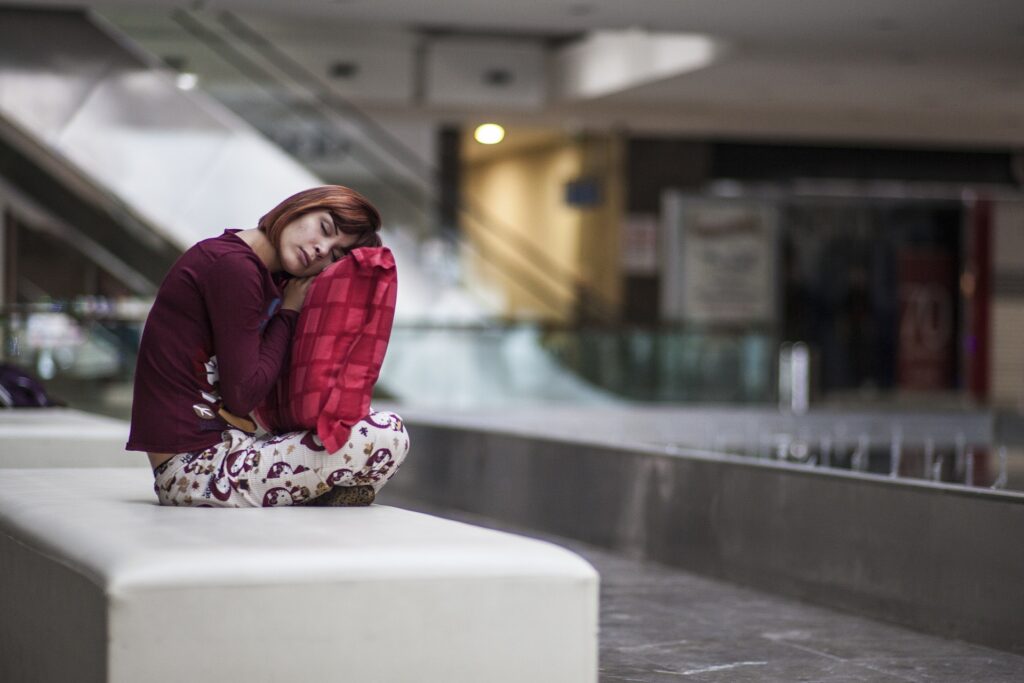


Why do people sleepwalk? This may be something that you have wondered about or even typed into the Google search bar.
In this article, we’ll explore the causes and solutions for this fascinating sleep disorder. We’ll delve into the sleepwalking causes, symptoms, dangers, diagnosis, and treatment options, as well as practical prevention strategies.
Get ready to unravel the mysteries of why people sleepwalk and find solutions to this intriguing phenomenon. Let’s dive in!
Sleepwalking is a disorder characterized by abnormal behaviors during sleep. It falls under the category of parasomnias, which are abnormal behaviors that occur during sleep.
Sleepwalking often occurs during non-REM sleep, specifically in stage 3 of the sleep cycle. The symptoms of sleepwalking can vary, and it isn’t limited to just walking. When people sleepwalk, they may engage in routine actions, have open eyes with a blank look, exhibit minimal responsiveness or incoherent speech, or even engage in sexual behavior or urinate in inappropriate places.
The prevalence of sleepwalking is much more common in children than adults, with an estimated 5% of children and 1.5% of adults experiencing a sleepwalking episode in the last 12 months.
To address sleepwalking, it’s important to take safety measures, improve sleep hygiene, and address underlying sleep disorders or stress.
To understand the causes of sleepwalking, you need to delve into the factors that contribute to this sleep disorder. Sleepwalking, also known as somnambulism, occurs during deep sleep and is characterized by actions performed while still asleep.
Here are some factors that can cause sleepwalking:

If you live with someone who’s sleepwalking, it is important to be aware of the potential dangers and risks associated with this sleep disorder. Sleepwalking can lead to serious health consequences and injuries. Mishandling sharp objects or attempting to drive a car during an episode can be life-threatening.
Sleepwalkers may also engage in violent behavior, causing harm to themselves or others. Embarrassing actions during sleepwalking episodes, such as sexually explicit behavior or urinating in inappropriate places, can cause shame. To prevent these risks, it is crucial to take safety measures and eliminate potential hazards in the sleep environment, especially for children who sleepwalk.
Addressing underlying sleep disorders, improving sleep hygiene, and reducing stress can help manage sleepwalking episodes. If sleepwalking becomes frequent or intense, it may be necessary to consider medication or cognitive-behavioral therapy as treatment options.
Exploring various treatment options is important to effectively manage sleepwalking episodes. Here are some options to consider:
Implementing safety measures can help prevent sleepwalking episodes. There are several strategies you can follow to reduce the risk of sleepwalking.
First, establish a regular sleep schedule by going to bed and waking up at the same time every day. This helps regulate your sleep-wake cycle and promotes better sleep habits.
Avoid caffeine and alcohol, as they can disrupt sleep stages and contribute to sleepwalking.
Also, stress management and relaxation techniques, such as deep breathing or meditation, can reduce sleepwalking triggers.

When seeking medical help for sleepwalking, consider consulting a healthcare professional to discuss your symptoms and explore potential underlying causes. It’s important to understand that sleepwalking is a type of sleep disorder that can be caused by various factors.
Here are three reasons why seeking medical care for sleepwalking is crucial:
In conclusion, sleepwalking is a fascinating and sometimes dangerous sleep disorder that can affect both children and adults. It’s characterized by abnormal behaviors that occur during non-REM sleep.
The causes of sleepwalking can vary, including genetics, sleep deprivation, medications, and alcohol consumption.
While there are risks associated with sleepwalking, there are also various treatment options and prevention strategies available.
If you or someone you know experiences sleepwalking, it’s important to seek medical help for proper diagnosis and management.
Cleveland Clinic (2021) Parasomnias & Disruptive Sleep Disorders [online]. Available at: https://my.clevelandclinic.org/health/diseases/12133-parasomnias--disruptive-sleep-disorders
Choc.org (n.d.) Kids and Sleepwalking [online]. Available at: https://www.choc.org/health-topics/kids-and-sleepwalking/#:~:text=Sleepwalking+is+far+more+common,lack+of+sleep+or+fatigue